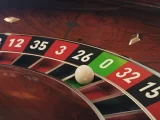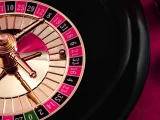
The Anatomy of a Roulette Table – A Guide to the Layout and Features
January 20, 2025Roulette is one of the world’s most beloved casino games. Its unique gameplay involves simply guessing where a small ball will land when its spindle stops spinning, and offers various betting opportunities.
Though each roulette table may appear similar, each has a distinctive layout which can affect your game strategy and how you calculate odds.
The Wheel
The roulette wheel is at the heart of any casino table game. Designed with red or black pockets numbered from 1 through 36 (typically red or black) as well as either zero or double zero depending on which version of roulette is being played, when someone bets, the croupier spins the wheel before releasing a small ball onto it in its opposite direction and determines which bets win or lose depending on where it lands on its final slot – inside or outside areas can bet on numbers such as odd/even numbers if possible!
Players place bets using colored chips with values determined by their buy-in to place bets, with losing bets being cleared away by hand or cleared off automatically after losing numbers have been determined by a dealer, while winners receive payouts according to predetermined odds. The wheelhead, which holds its cone and pockets of numbers on metal rings, is commonly referred to as the rotor.
The Table
Roulette stands apart from many casino games in that it requires more than luck to succeed. Its table and wheel combine for an engaging dance of chance and strategy; understanding its table layout opens the way to strategic betting strategies.
A standard roulette table features a number series and green zero pocket that correspond to the compartments on a wheel. Individual numbers can be placed inside while outside section offers group bets like red/black and odd/even.
It is also helpful to familiarize yourself with the payouts for various bets in advance so you can place your chips correctly. Each color represents a specific payout amount depending on how many chips are needed to “complete” a bet, although this depends on its type and its location on the table; any aspect of gameplay can easily be explained by your dealer. Creating a gambling budget in advance is always recommended to promote responsible gaming experience and ensure maximum enjoyment from gameplay.
The Bets
A roulette table features a variety of bets with different odds and payouts. Players place their chips according to their desired bet on the table layout before spinning the wheel – this results in which bets win!
However, roulette offers numerous strategic and tactical opportunities for players. To maximize enjoyment while remaining responsible gaming, it is vital that a gambling budget be set before beginning play and adhered to; this will not only ensure financial responsibility but also help prevent anxiety during gameplay.
Once the winning number and color have been established, the dealer will place a marker known as a dolly on that section of the table layout to mark its victory. At this time, losing bets are cleared away while winning ones are paid out according to predetermined odds. Roulette tables typically offer colored chips with denominations matching their buy-in amounts.
The Rules
No matter the roulette wheel type – single zero or double zero – they all follow a specific sequence of numbers with different payout odds for different bet types. Players can place bets on individual numbers, groups of adjacent numbers (known as split bets) or larger groups based on characteristics such as colour or parity.
Each roulette variant requires its own table layout, with distinct areas for various types of bets. Specialized markings on a roulette table layout help players easily place their chips, while they also act as visual guides to indicate odds for every bet type.
As the wheel revolves and the ball bounces around, players move, adjust, or retract their bets in response to each spin of the wheel and bounce of the ball. As soon as one of its pockets opens up for play, a dealer places a marker and pays out any winning bets before clearing away and starting another round.






